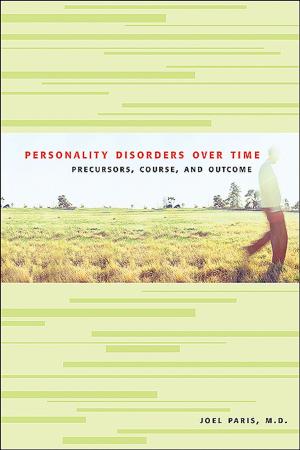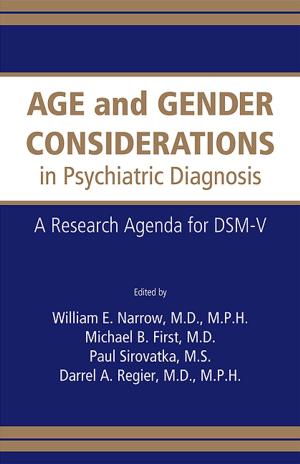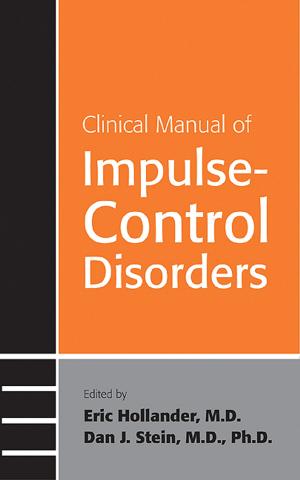The Latino Psychiatric Patient
Assessment and Treatment
Nonfiction, Health & Well Being, Medical, Specialties, Psychiatry| Author: | ISBN: | 9781585627998 | |
| Publisher: | American Psychiatric Publishing | Publication: | November 1, 2008 |
| Imprint: | American Psychiatric Association Publishing | Language: | English |
| Author: | |
| ISBN: | 9781585627998 |
| Publisher: | American Psychiatric Publishing |
| Publication: | November 1, 2008 |
| Imprint: | American Psychiatric Association Publishing |
| Language: | English |
Constituting nearly 12 percent of the US population, Latinos (a term used interchangeably with the term Hispanic throughout the text) are expected to become the second-largest race ethnic group (after non-Hispanic whites) by 2010. This growth emphasizes the increasing importance of understanding the cultural factors affecting the psychiatric treatment of Latino patients.
Integrating culture-specific treatments, such as the services of a folk healer (called a santero in Cuba and a curandero in Mexico), with more traditional interventions, such as medication and case management services, is crucial to achieving successful outcomes for Latino patients.
This unique book helps mental health professionals acquire the knowledge, skills, and -- most important -- the cultural sensitivity necessary for treating Latino patients in the United States. The book can aid clinicians in learning to appreciate the importance of language, culture, religion, gender, sexual orientation, race, and ethnicity in psychiatric evaluation and care.
The editors of this insightful, wide-ranging text have structured the work of 20 distinguished contributors into three major sections: Section I, Overview, presents an overview and brief history of Latinos in the United States, including demographic data and statistics on their physical and mental health. Variables include language, religion, geographical origin, class, race, degree of acculturation, gender, education, and sexual orientation. Of particular interest here is practical guidance on conducting culturally sensitive psychiatric evaluations of Latino patients. Section II, Individual Countries, highlights the fascinating differences among the major Latino subgroups in the US, including Colombia, Cuba, the Dominican Republic, El Salvador, Mexico, Nicaragua, Peru, and Puerto Rico, and details their distinct characteristics (from cuisine, music, and literature to dialects and traditions) so that clinicians may better understand these patients and incorporate this knowledge into their practices. Section III, Special Issues, discusses today's the pressing realities of Latino life in the United States -- such as socioeconomic status, the gender roles of machismo (qualities of the strong, powerful, active man) and marianismo (the qualities of the submissive, obedient woman), and cultural ideals such as familismo (strong loyalty and duty to family) -- and how these factors affect treatment. Discussions span women's issues, substance abuse, and violence in Latino populations.
Of broad interest to students, residents, and practicing clinicians, this informative volume adds a singularly valuable tool needed to understand, evaluate, and treat Latino patients by viewing their original culture and belief system as integral parts of who they are.
Constituting nearly 12 percent of the US population, Latinos (a term used interchangeably with the term Hispanic throughout the text) are expected to become the second-largest race ethnic group (after non-Hispanic whites) by 2010. This growth emphasizes the increasing importance of understanding the cultural factors affecting the psychiatric treatment of Latino patients.
Integrating culture-specific treatments, such as the services of a folk healer (called a santero in Cuba and a curandero in Mexico), with more traditional interventions, such as medication and case management services, is crucial to achieving successful outcomes for Latino patients.
This unique book helps mental health professionals acquire the knowledge, skills, and -- most important -- the cultural sensitivity necessary for treating Latino patients in the United States. The book can aid clinicians in learning to appreciate the importance of language, culture, religion, gender, sexual orientation, race, and ethnicity in psychiatric evaluation and care.
The editors of this insightful, wide-ranging text have structured the work of 20 distinguished contributors into three major sections: Section I, Overview, presents an overview and brief history of Latinos in the United States, including demographic data and statistics on their physical and mental health. Variables include language, religion, geographical origin, class, race, degree of acculturation, gender, education, and sexual orientation. Of particular interest here is practical guidance on conducting culturally sensitive psychiatric evaluations of Latino patients. Section II, Individual Countries, highlights the fascinating differences among the major Latino subgroups in the US, including Colombia, Cuba, the Dominican Republic, El Salvador, Mexico, Nicaragua, Peru, and Puerto Rico, and details their distinct characteristics (from cuisine, music, and literature to dialects and traditions) so that clinicians may better understand these patients and incorporate this knowledge into their practices. Section III, Special Issues, discusses today's the pressing realities of Latino life in the United States -- such as socioeconomic status, the gender roles of machismo (qualities of the strong, powerful, active man) and marianismo (the qualities of the submissive, obedient woman), and cultural ideals such as familismo (strong loyalty and duty to family) -- and how these factors affect treatment. Discussions span women's issues, substance abuse, and violence in Latino populations.
Of broad interest to students, residents, and practicing clinicians, this informative volume adds a singularly valuable tool needed to understand, evaluate, and treat Latino patients by viewing their original culture and belief system as integral parts of who they are.















